CRAMPING
Cramping is materializing as a series of works that extract the biological labor of uterine cramps or contractions from the womb and directs them toward the body politic. In this slip, the reproductive labor drops its benefit to the ruling class and instead produces an affect of revolt via the dispossessed cramp. Ultimately, Cramping looks to generate a revolt-logic through the subversion of a menstrual rhythm.
A cramp is a painful involuntary contraction of a muscle and something that is felt ritualistically by uteri and spaces of chronic pain. A uterine cramp is a constant reminder of one’s precarious life1 and the subjugation of an unpaid womb.
As Sarah Ahmed states in The Cultural Politics of Emotion: ‘Pain involves the violation or transgression of the border between the inside and outside. The pain of a uterine cramp not only transgresses a biological boundary (the internal contracts/the external winces) but, in Cramping, a psychic boundary too: the border between an internalized singular responsibility to child-rear and the externalized urge to revolt and cast-off.
This revolt is actualized in the exhibition through an adherence to an infradian rhythm, a communion with oil painting, and fermentation as a means of mothering.
1. As considered by Judith Butler and Jacqueline Rose
Below is a public note on the project as it sits scraped from (a) womb.. ︎︎︎
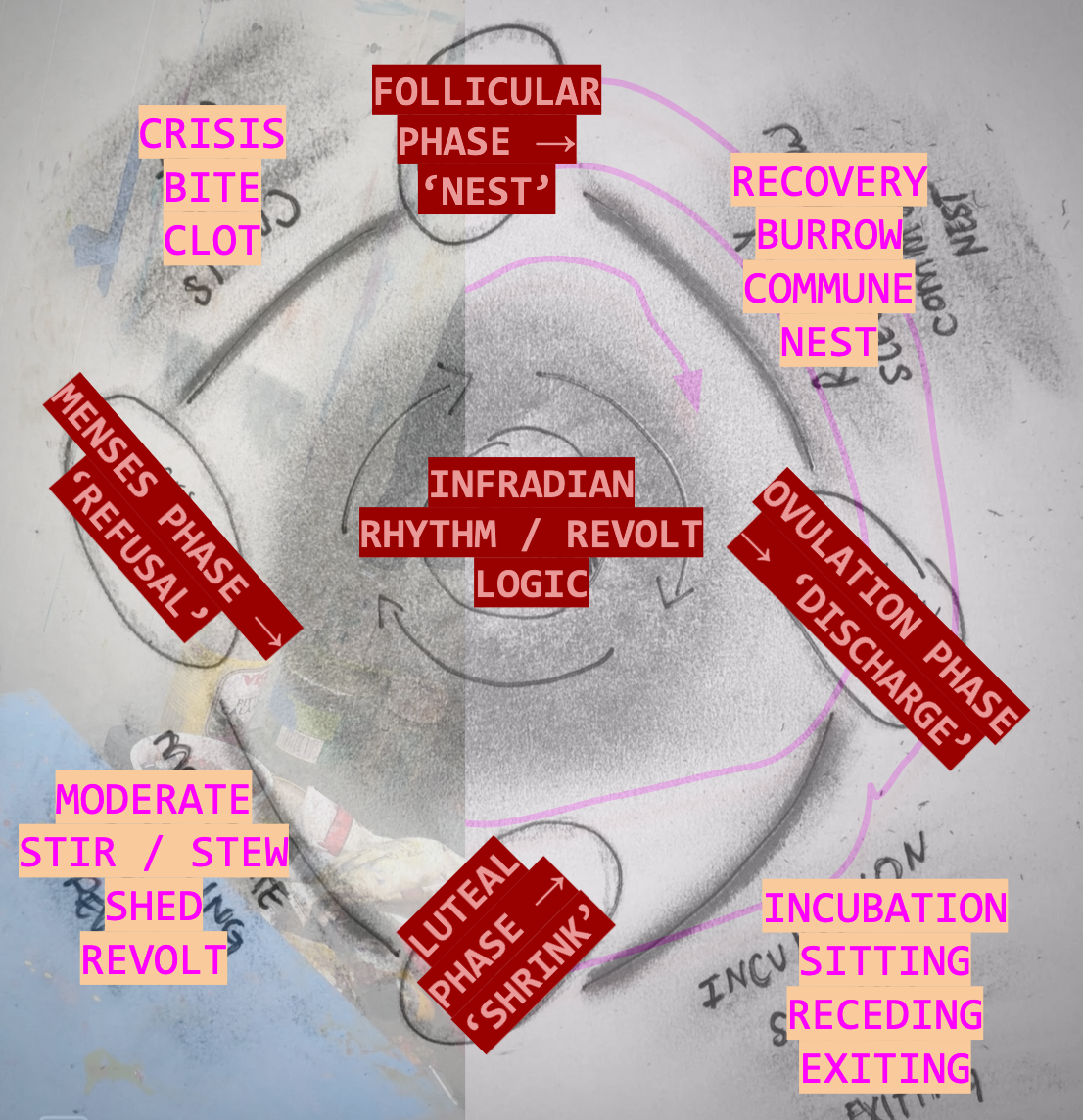
What if the phases of the menstrual cycle are displaced from the womb in an exercise of de-sexed mothering to signal revolt?
What if oil painting became a performance and a meditation of sitting and stewing? waiting for dryness and working at a small scale to ask the body to rest, to process, to whisper.
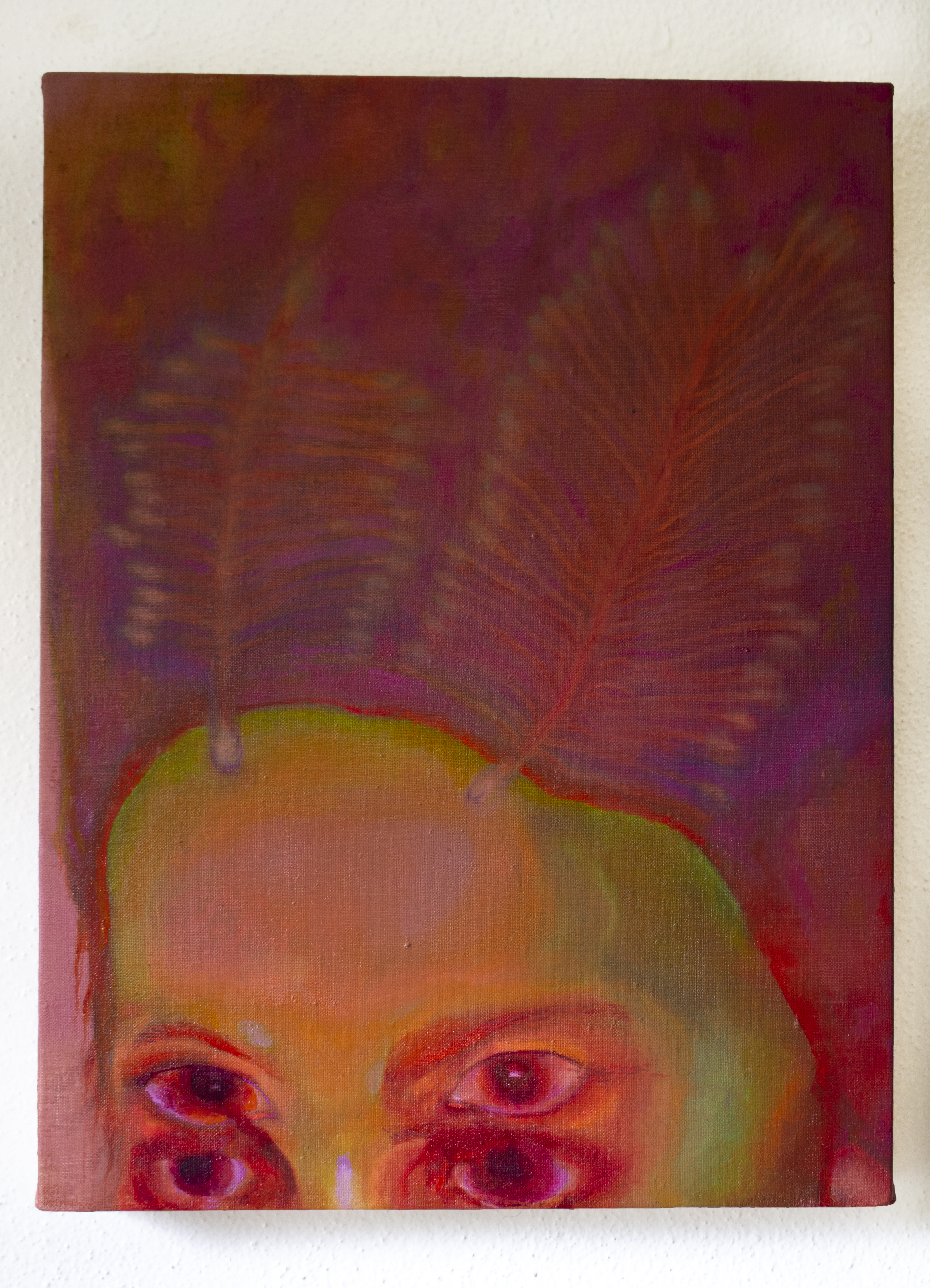
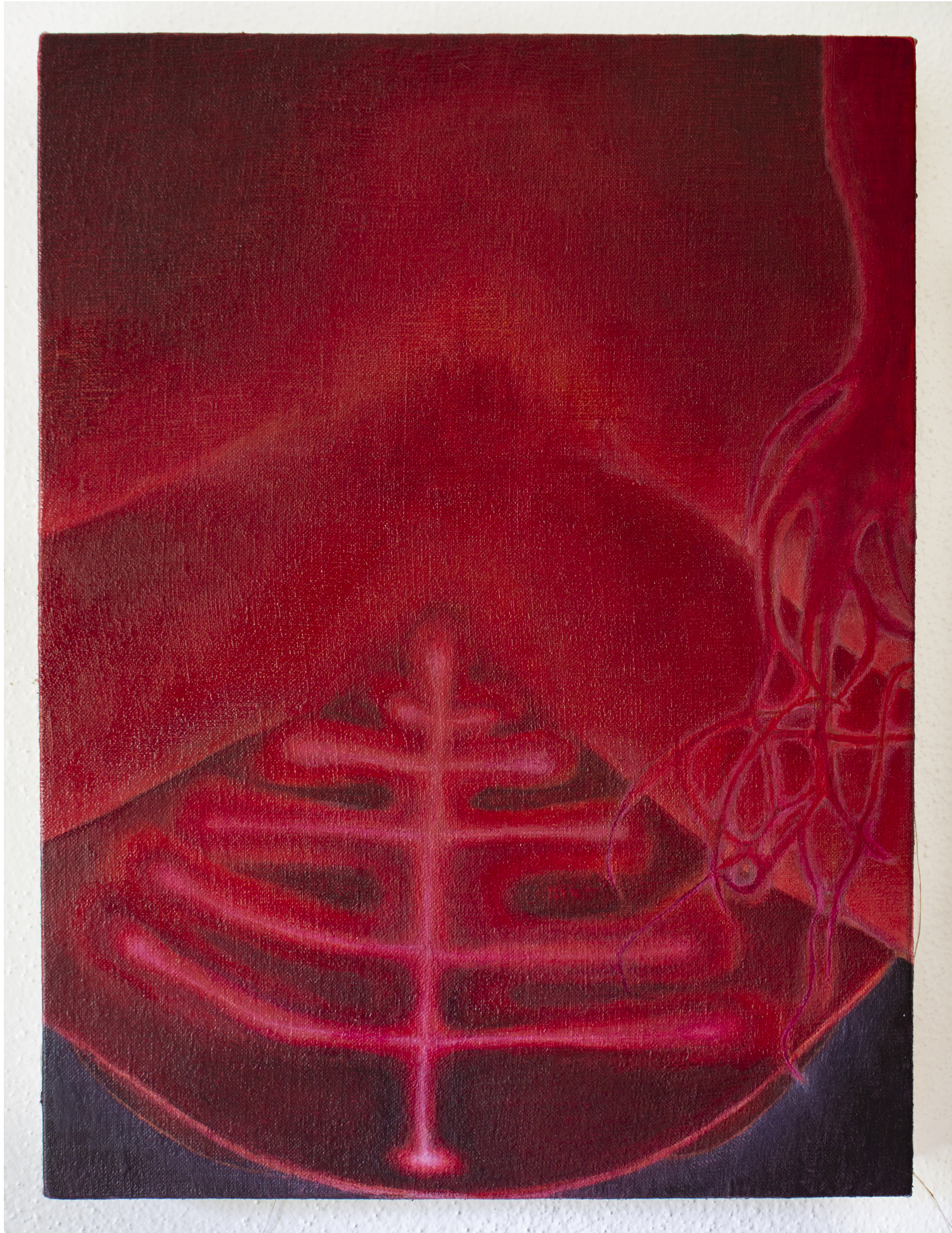
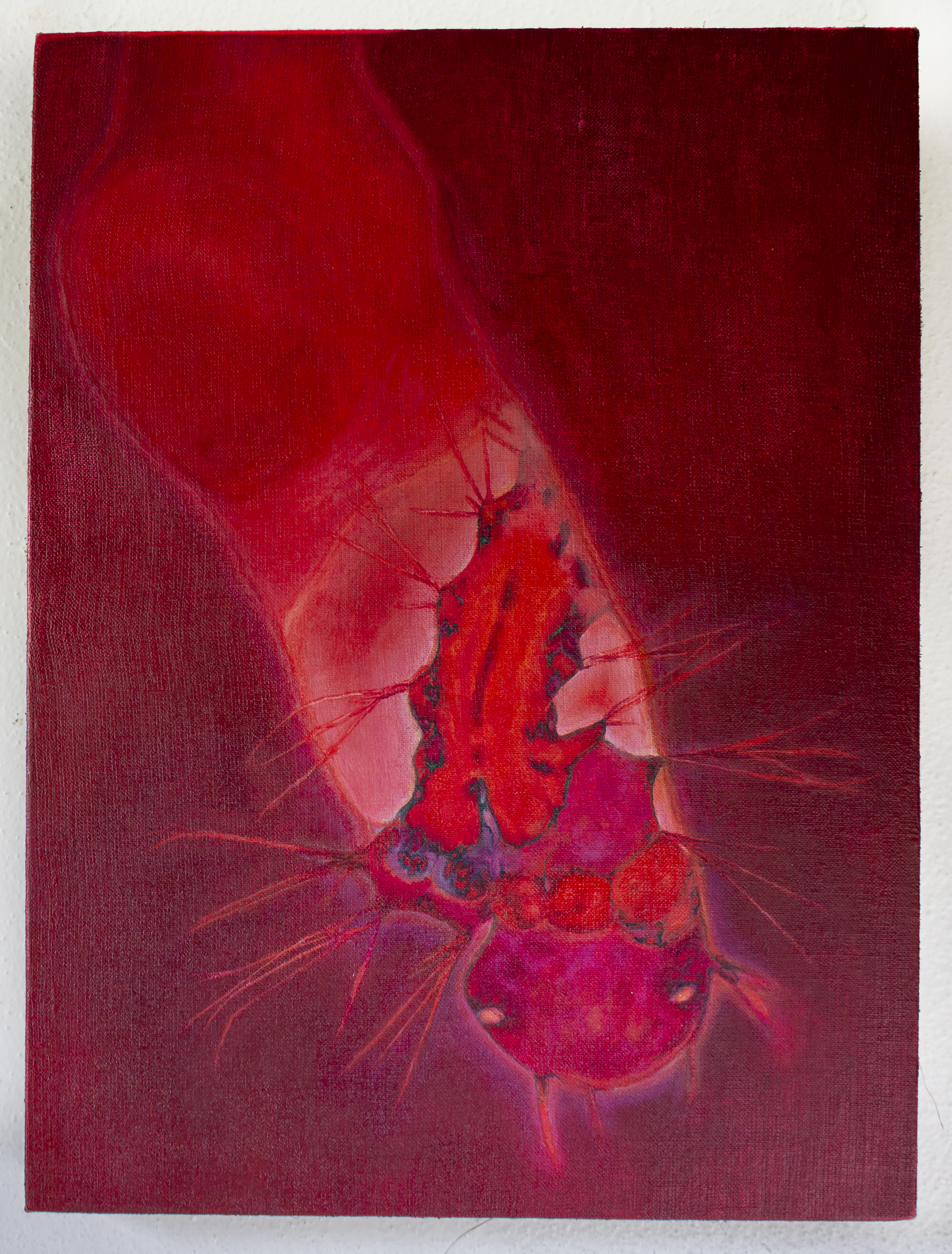
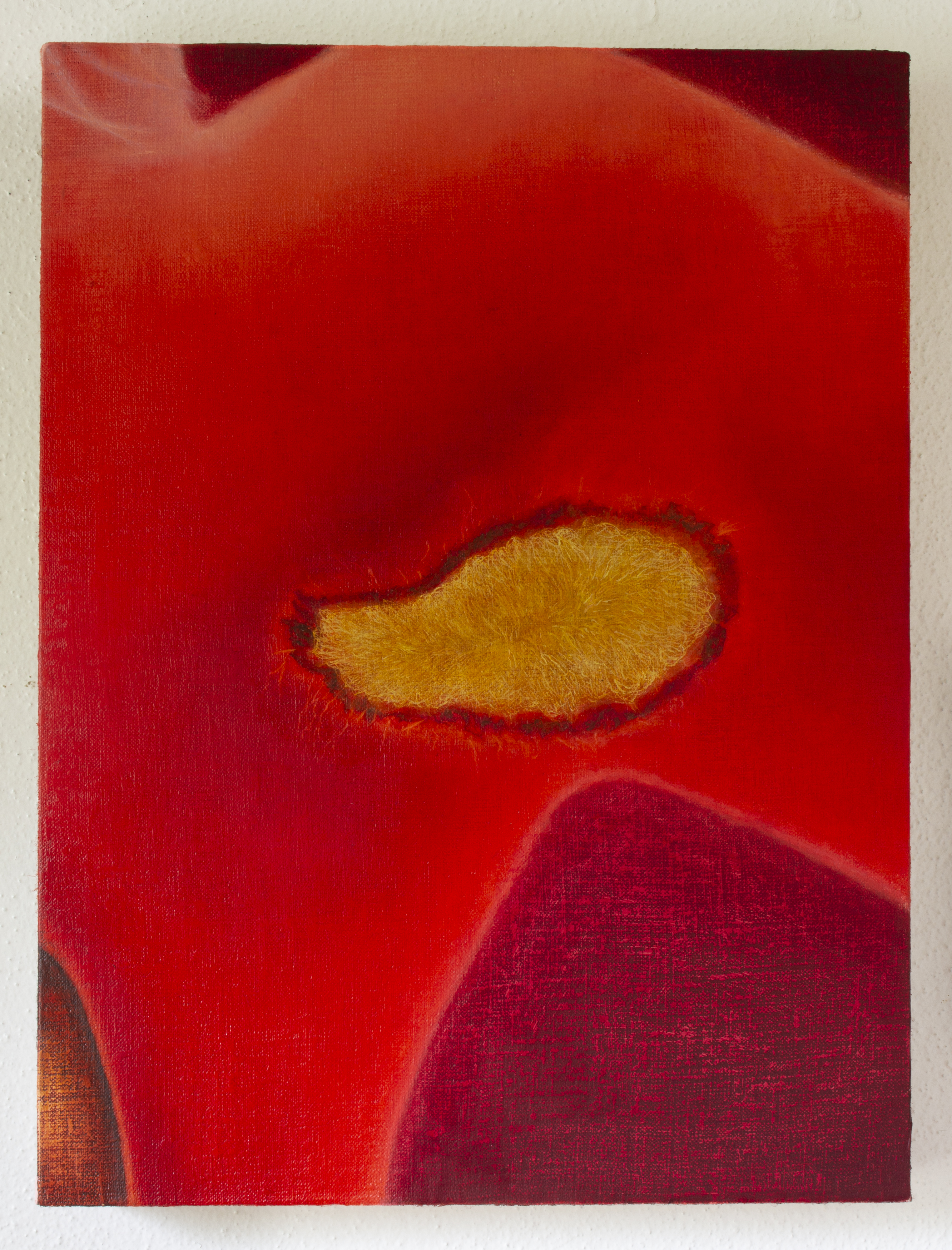
FERMENTATION!
Revolt is channeled through a constant communion with fermentation. To ferment is to break down, but to break down slowly through symbiotic microorganism collaboration and latent energy.
In the follicular phase of menstruation, oestrogen causes the secretion of sugars, which local bacteria convert into lactic acid. Fermentation becomes a preservative through the production of lactic acid.
While resting - I raise SCOBYs. SCOBY is an acronym, meaning ‘symbiotic culture of bacteria and yeast’, a balance of bacteria and yeast is also needed in the vagina.
I’m growing and nurturing large sheets of SCOBY Leather from a mother SCOBY gifted from a long, lost friend in Missouri. From that mother I’ve raised 30+ babies. I burp and feed the SCOBYs in their fermenting sacs of tea and sugar. After a few weeks they are thick enough to dry out, and thus leave their wombs and meet the sunlight for the first time. I wash the SCOBYS with cochineal, stretch them in the sun, and massage them with coconut oil. Once dry they become a leather and are cut into strips and twisted into rope.
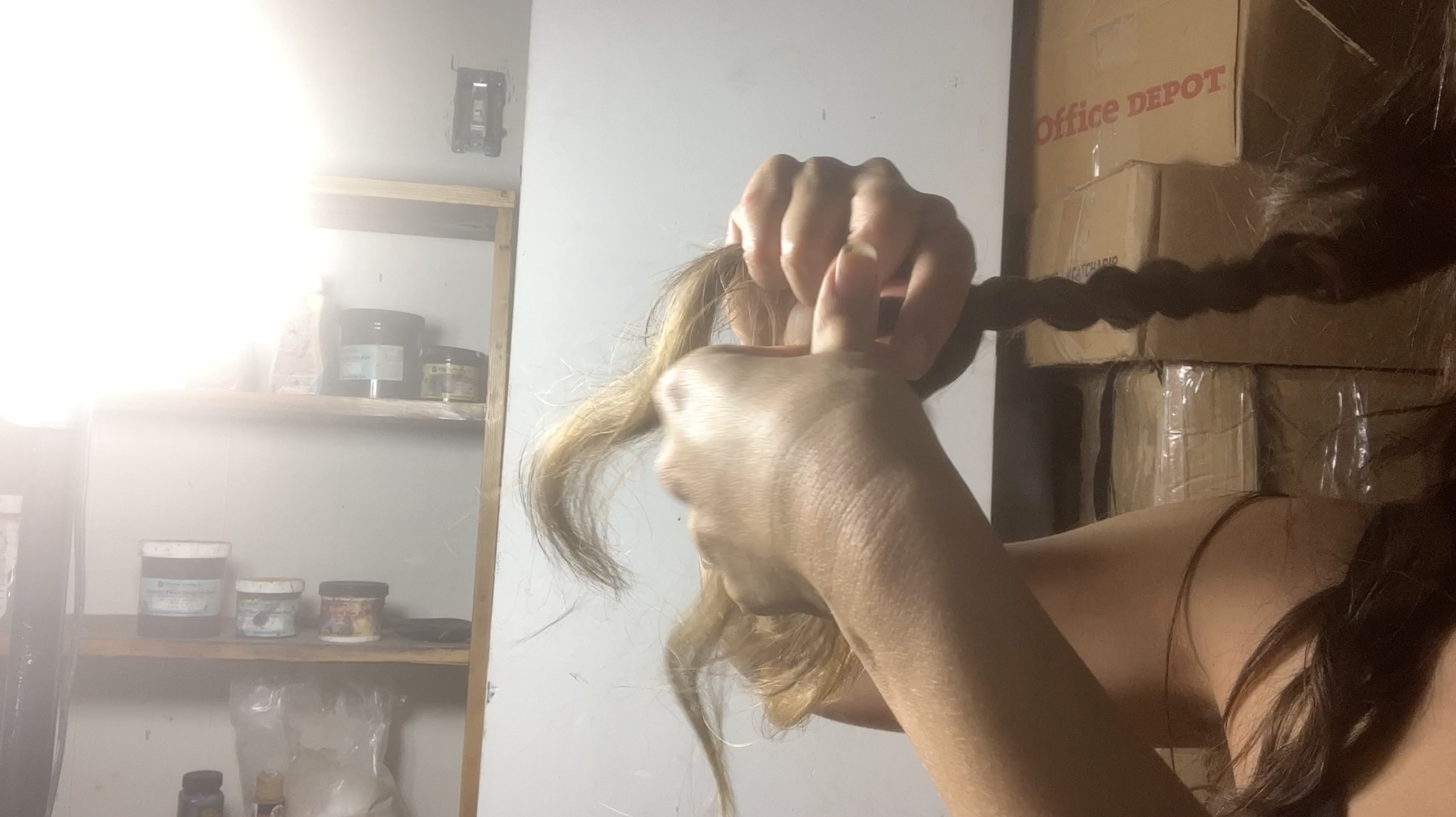
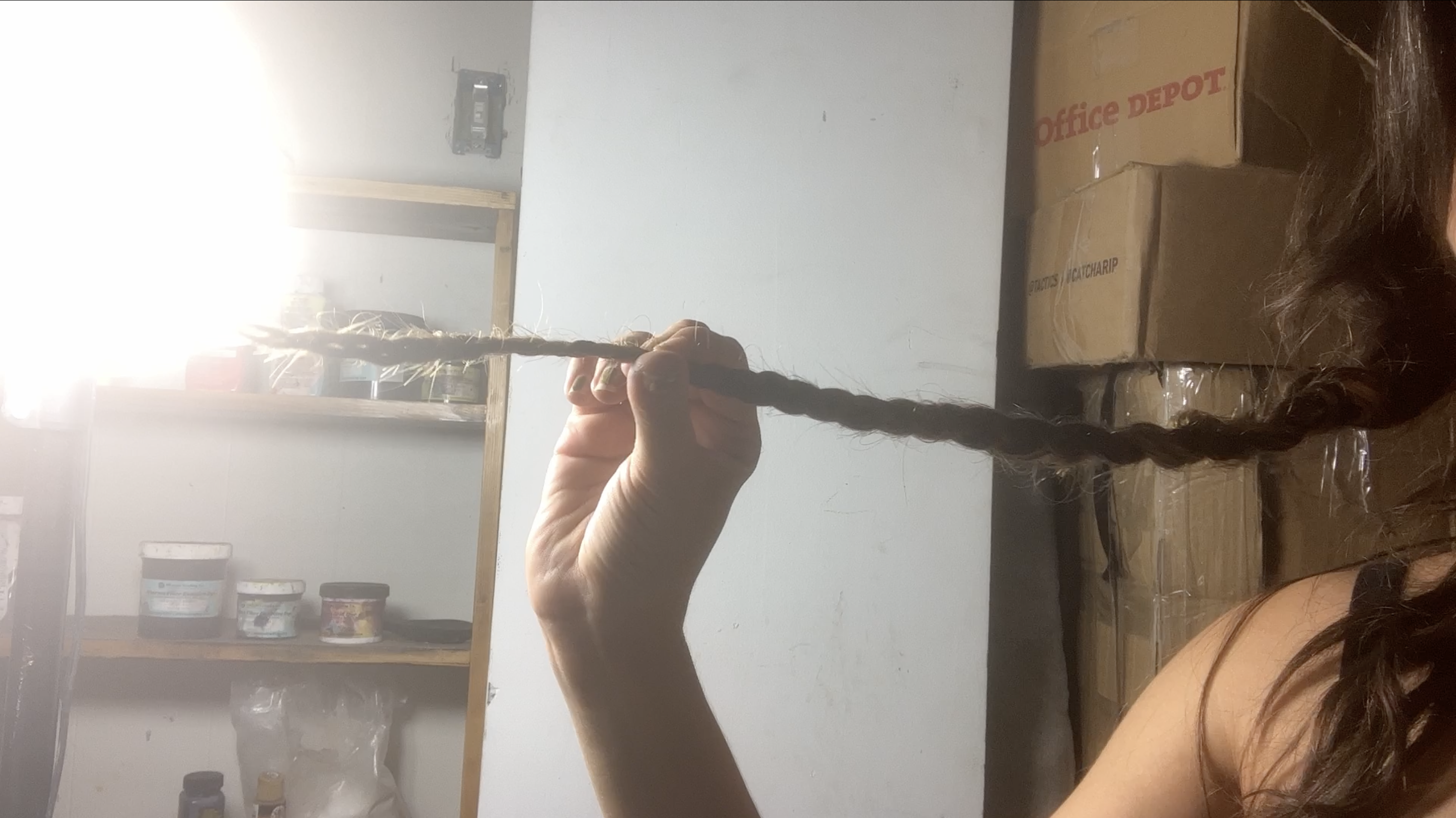
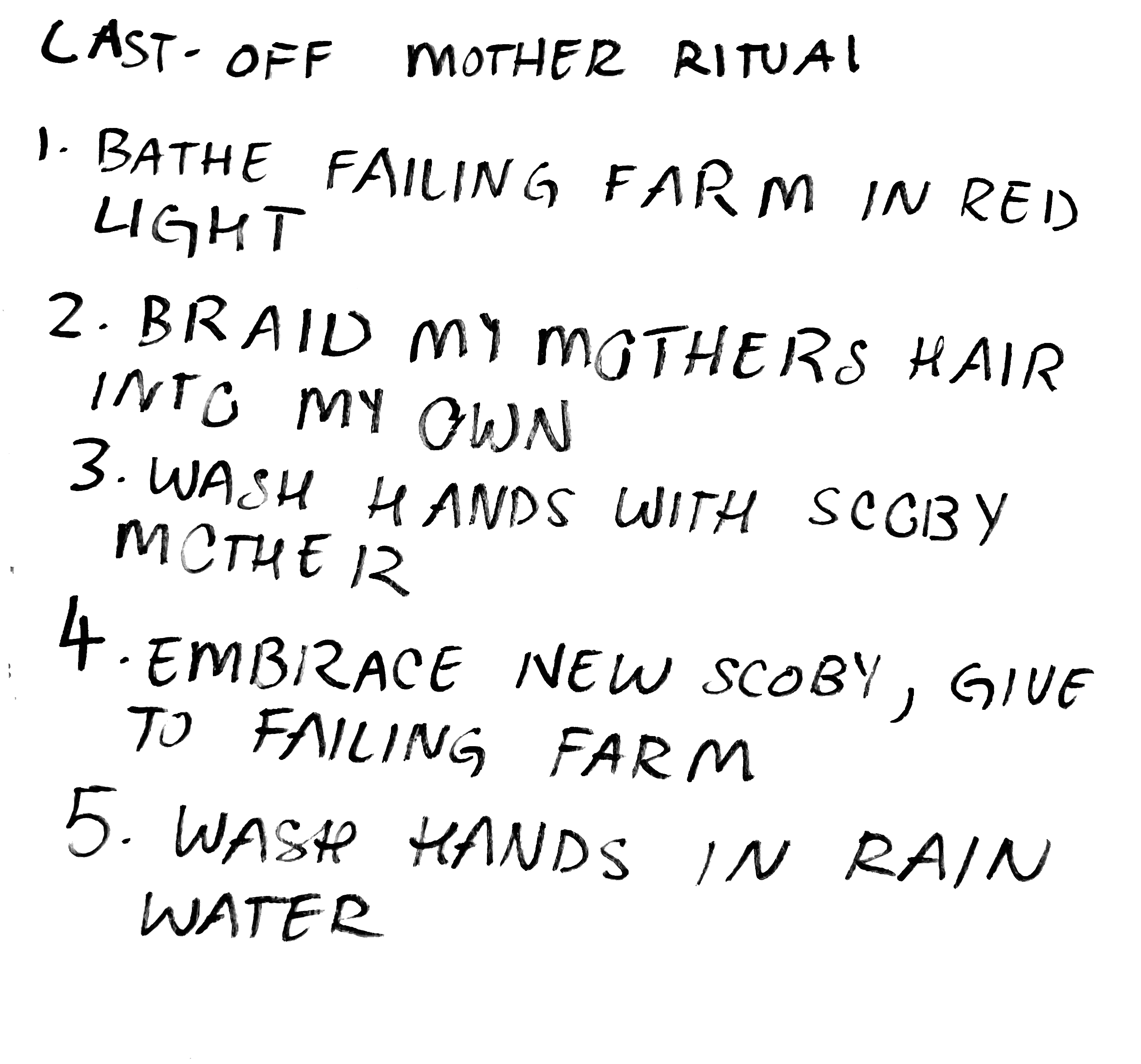
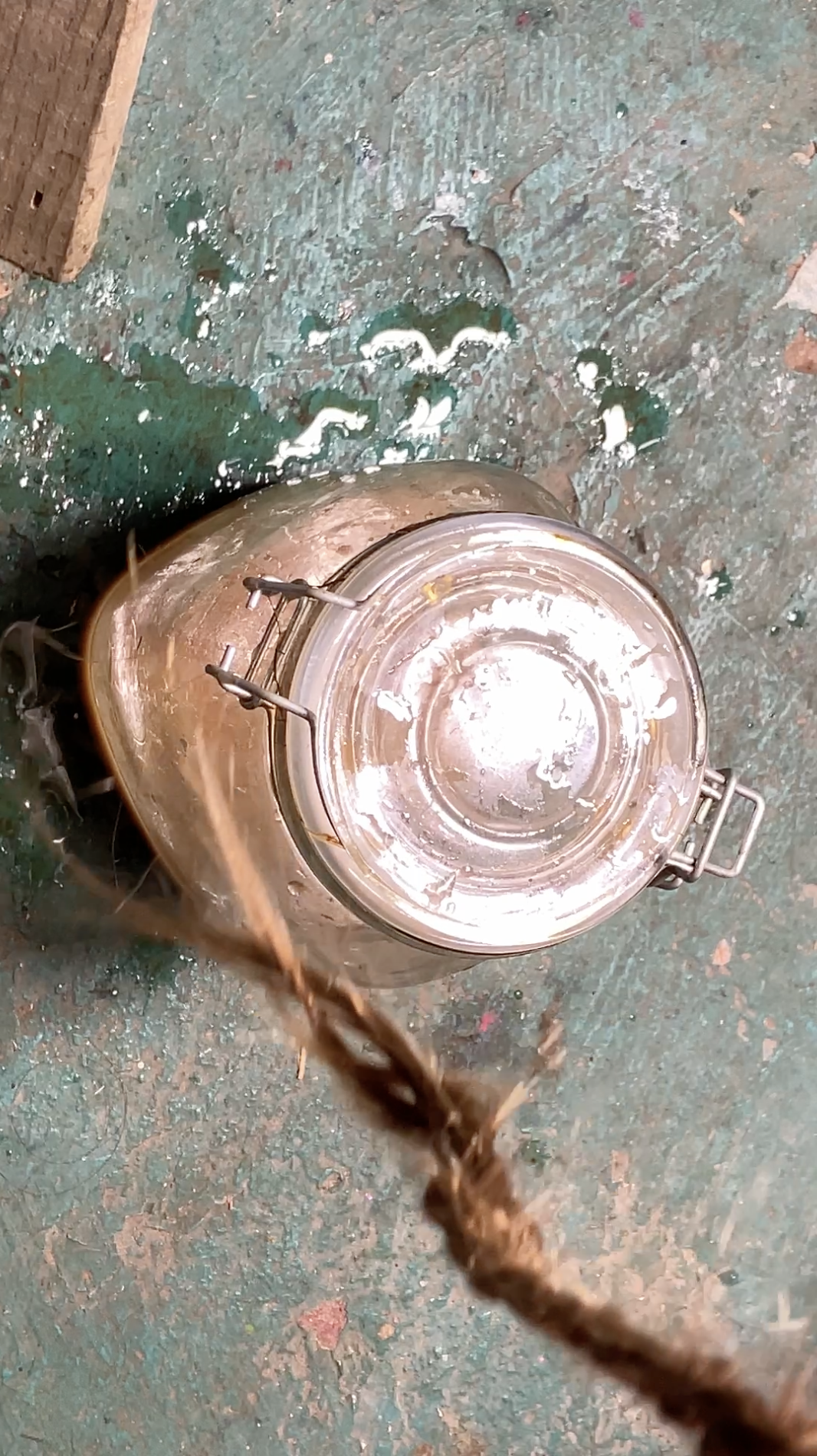
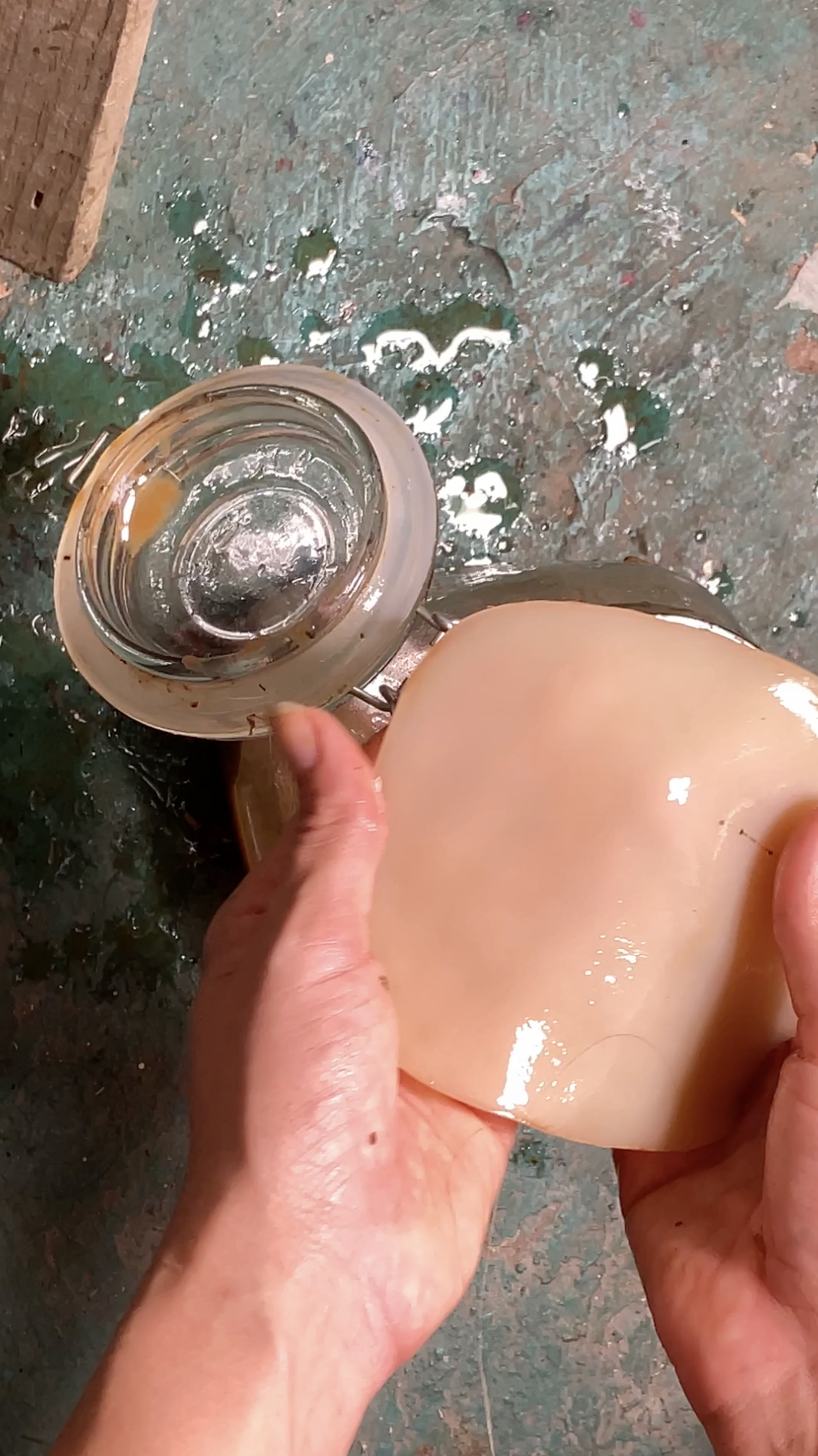


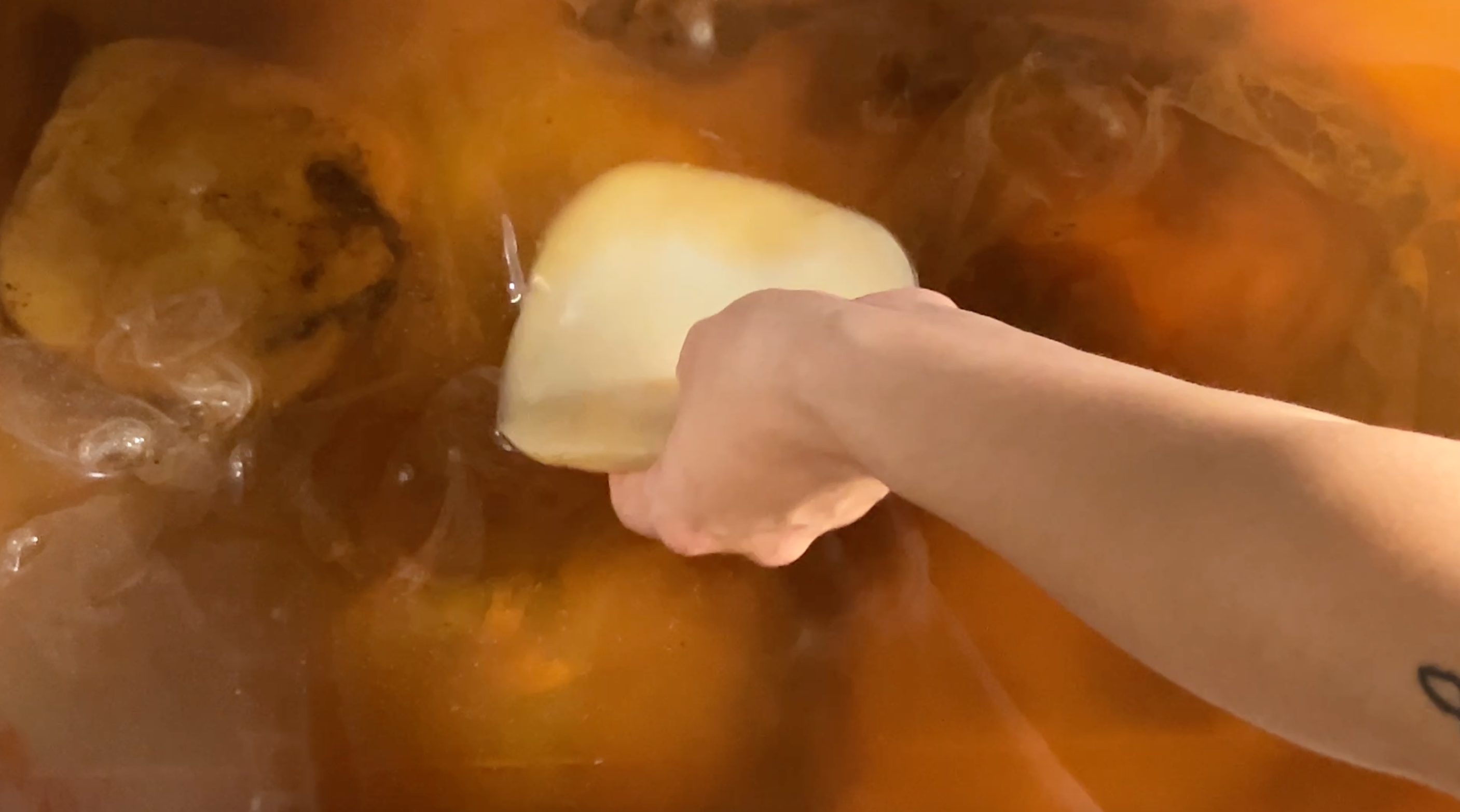
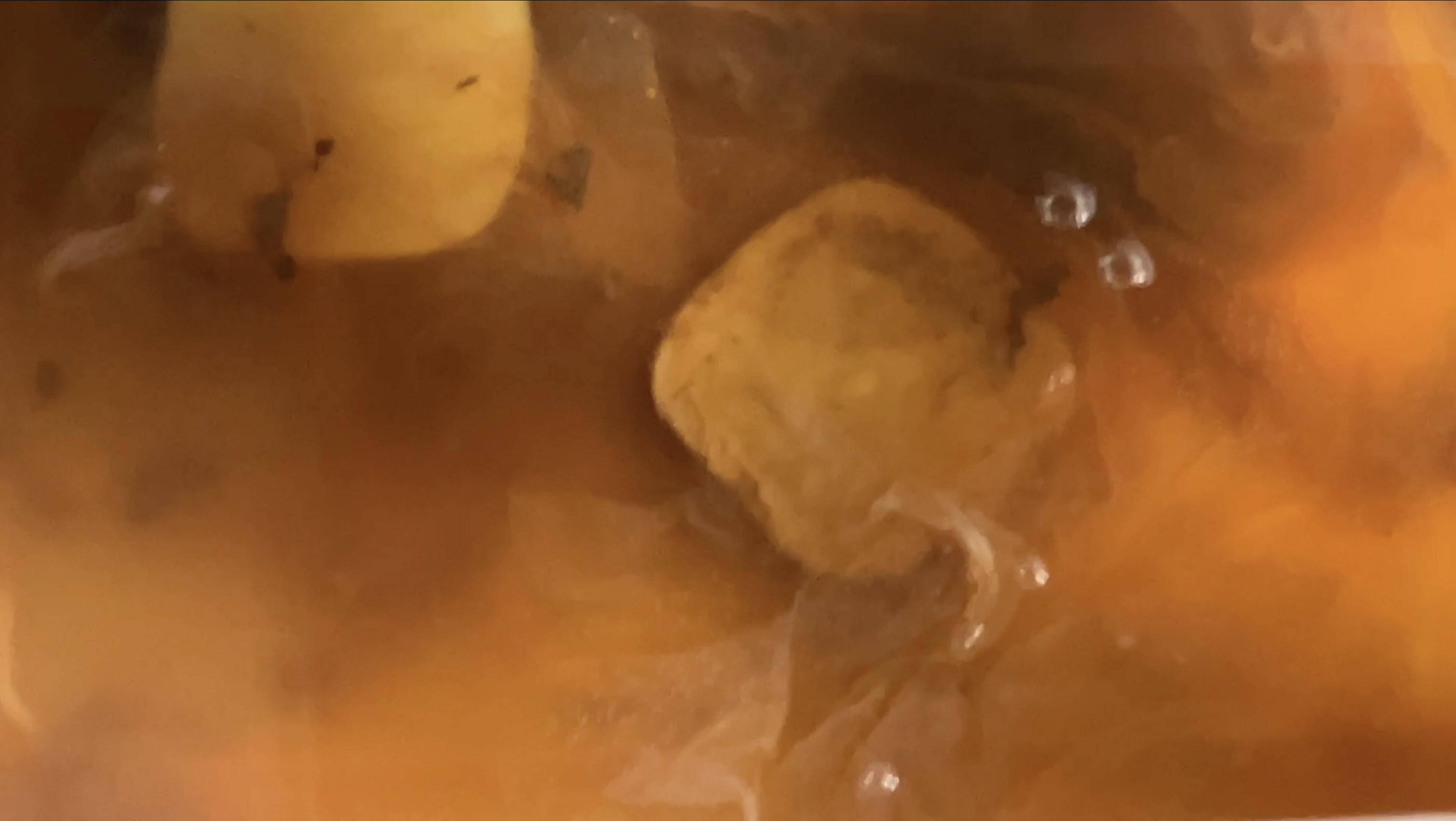
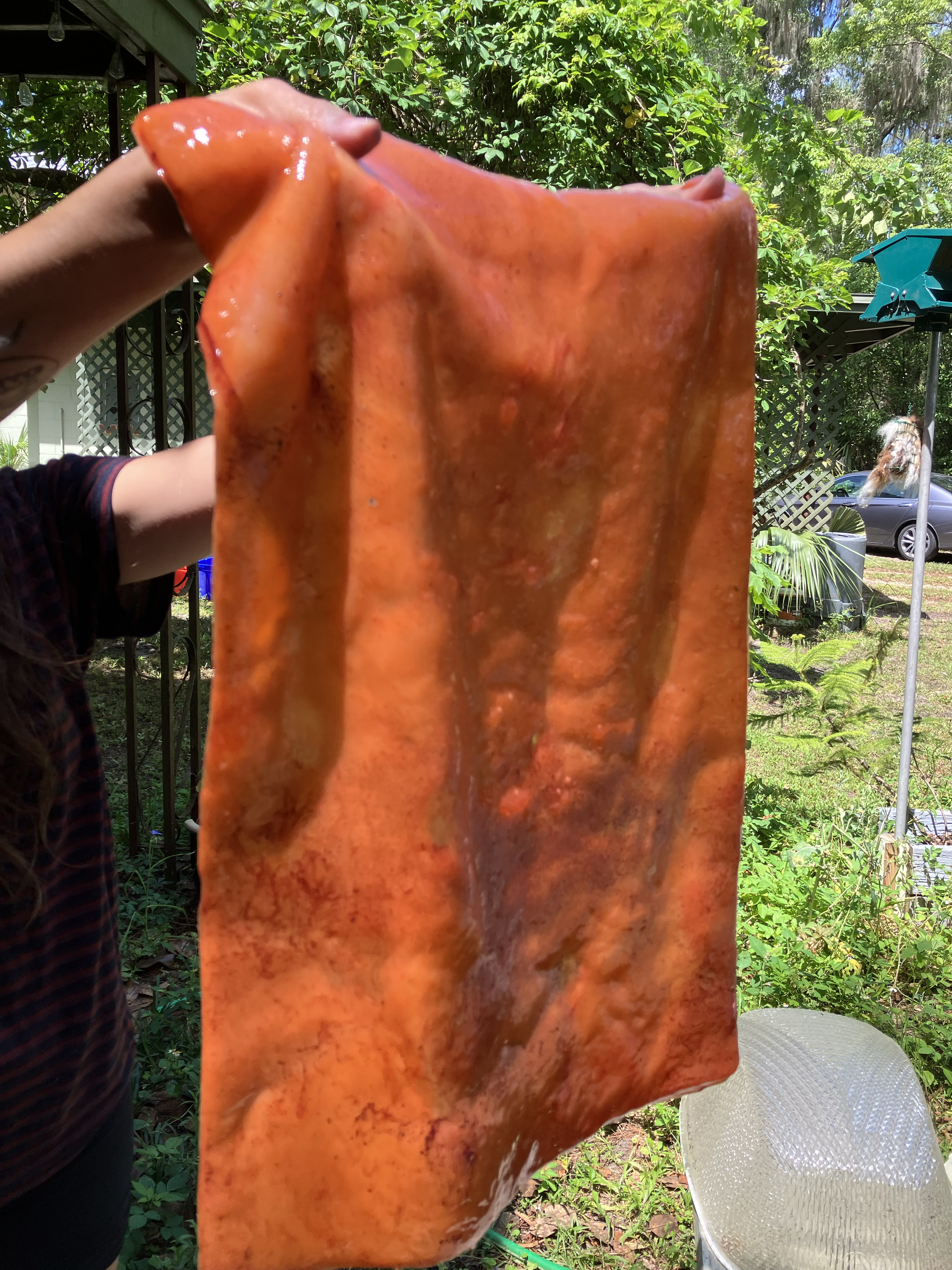
some SCOBY rope ans scabs installed at Yeh Art Gallery for the exhibition The Mother of All
“The Yeh Art Gallery, St. John’s University is pleased to present The Mother of All, a group exhibition about fermentation. Imagine a primordial broth: about four billion years ago, molecules, swimming in a pool of chemical reactions, chained together and sparked the building blocks of what would become single-celled bacteria, the mother of all life. Today, foods like kombucha, kimchi, and kefir exist because of microbes, and, more specifically, symbiotic cultures of bacteria and yeast, more commonly known as SCOBYs. A SCOBY mothers a life-giving process of fermentation, a chorus of bubbles and burps. Using fermentation as a point of departure, The Mother of All, presents the work of three artists – Devin Harclerode, Mo Kong, and Yixuan Wu – whose sculptures and installations literally or metaphorically use fermentation to expand our understanding of life-giving matter.
To create her site-specific installation, Harclerode uses dried SCOBY leather, died with cochineal, to weave rope that drapes in the gallery like viscera. For Harclerode, she correlates the act of menstruation as a type of fermentation, “extract[ing] the biological labor of uterine cramps,” which leads to new life. Wu’s drawings and sculpture use fermentation metaphorically: motifs of heat, food, and chemical processes create the possibility of transformation and loss. Kong’s sculptures use techniques and materials from food fermentation and preservation – from jars to heat lamps and shrink wrap – to engage with ideas related to survival.
The Mother of All is curated by Owen Duffy, Director, Yeh Art Gallery.”
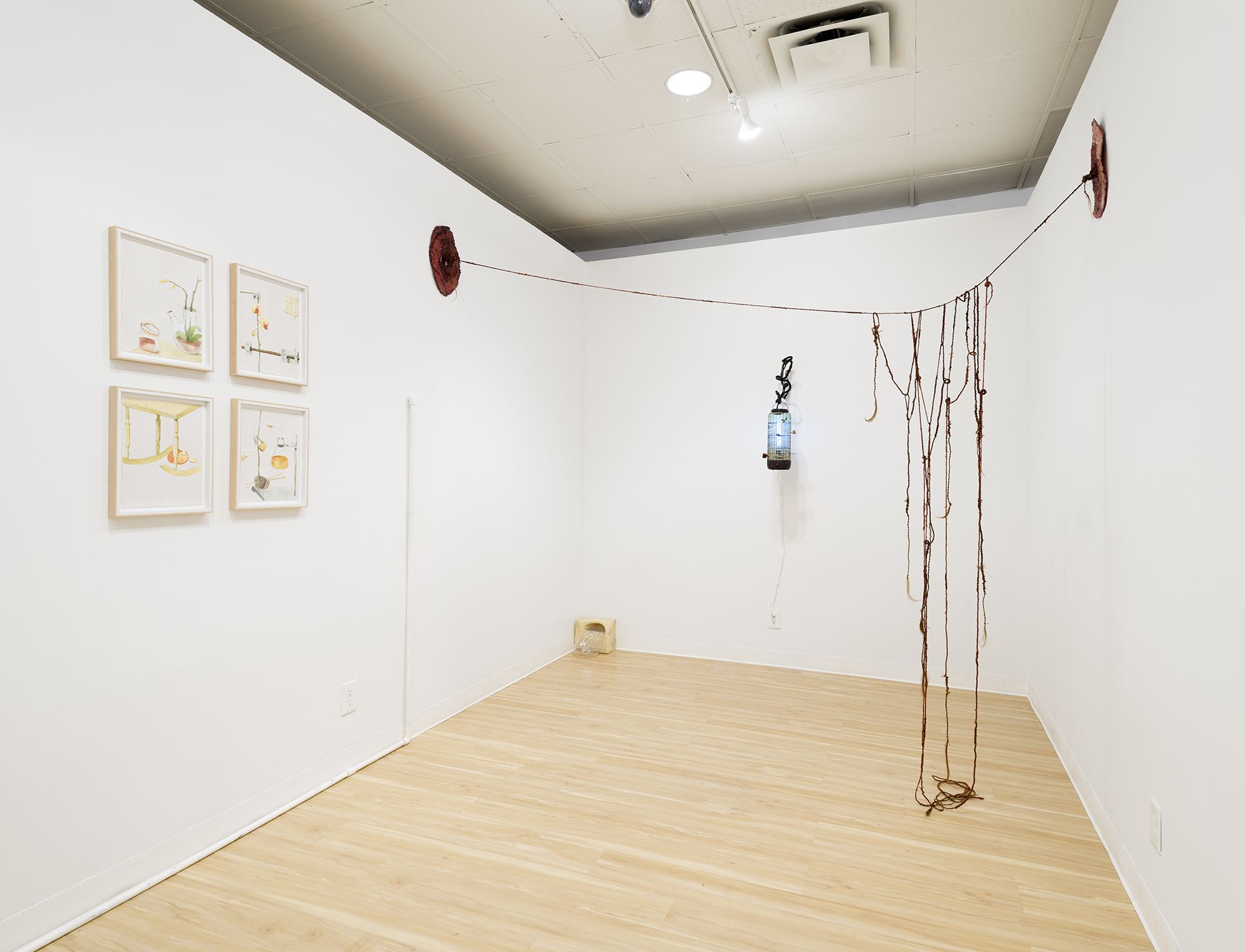
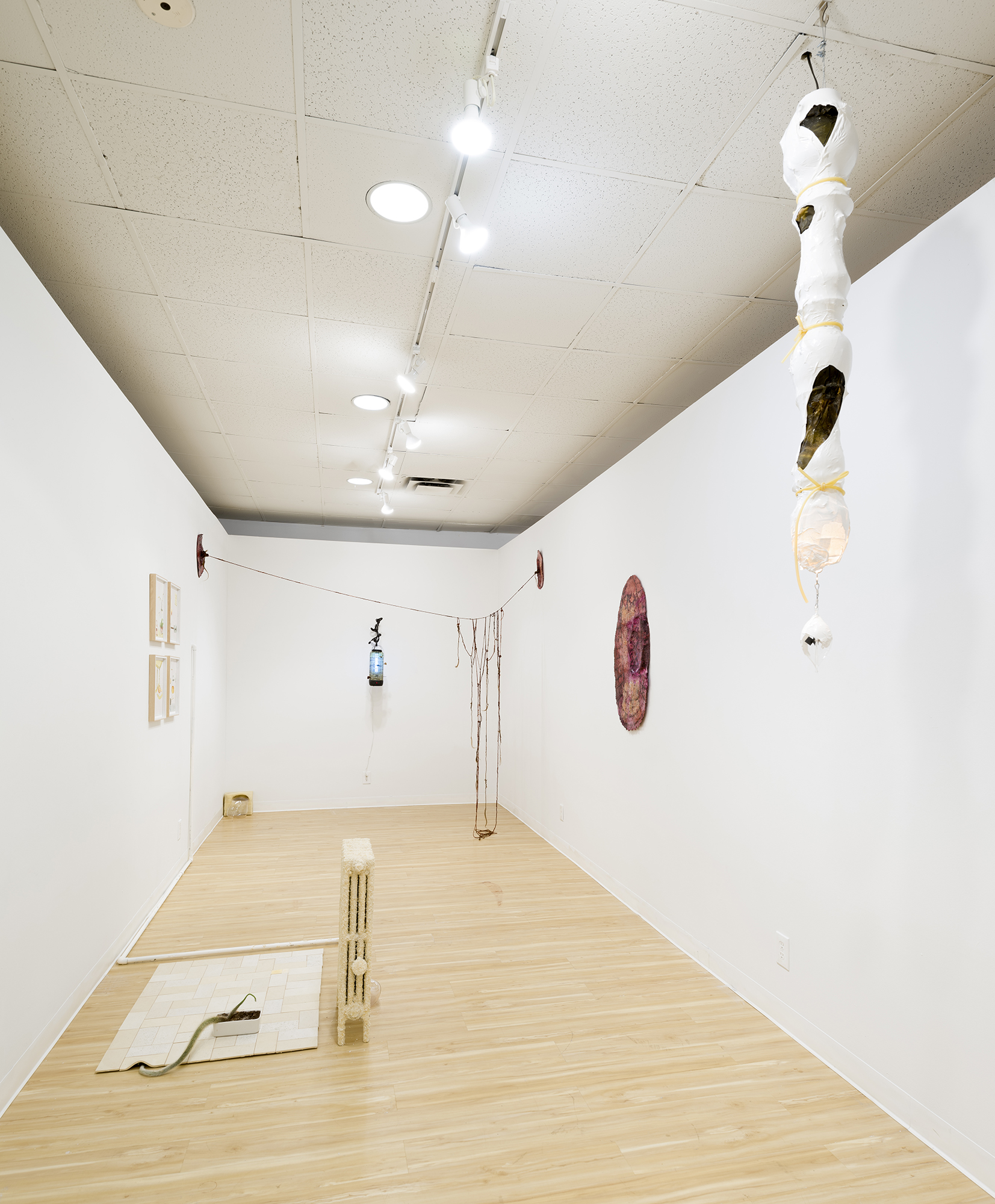
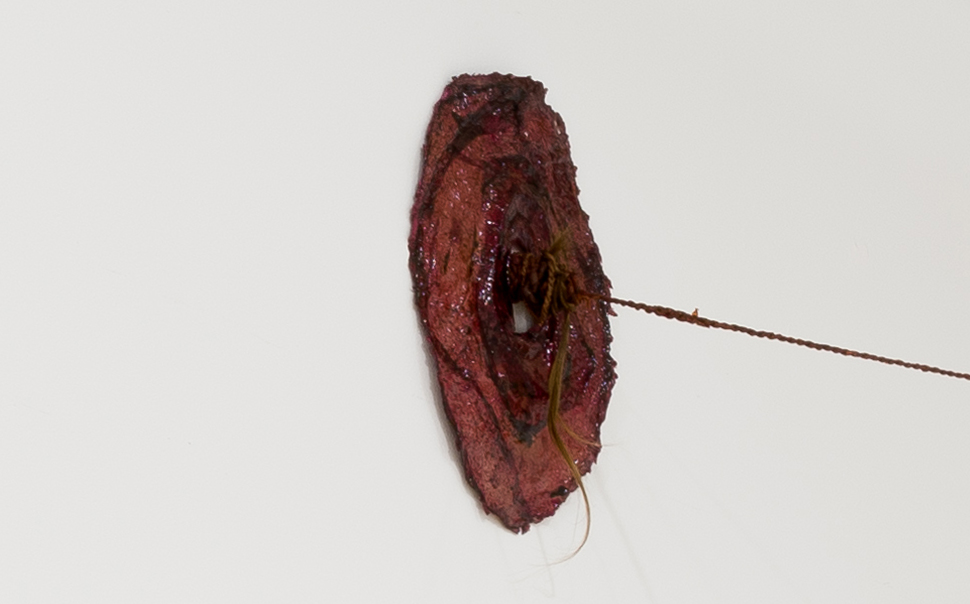
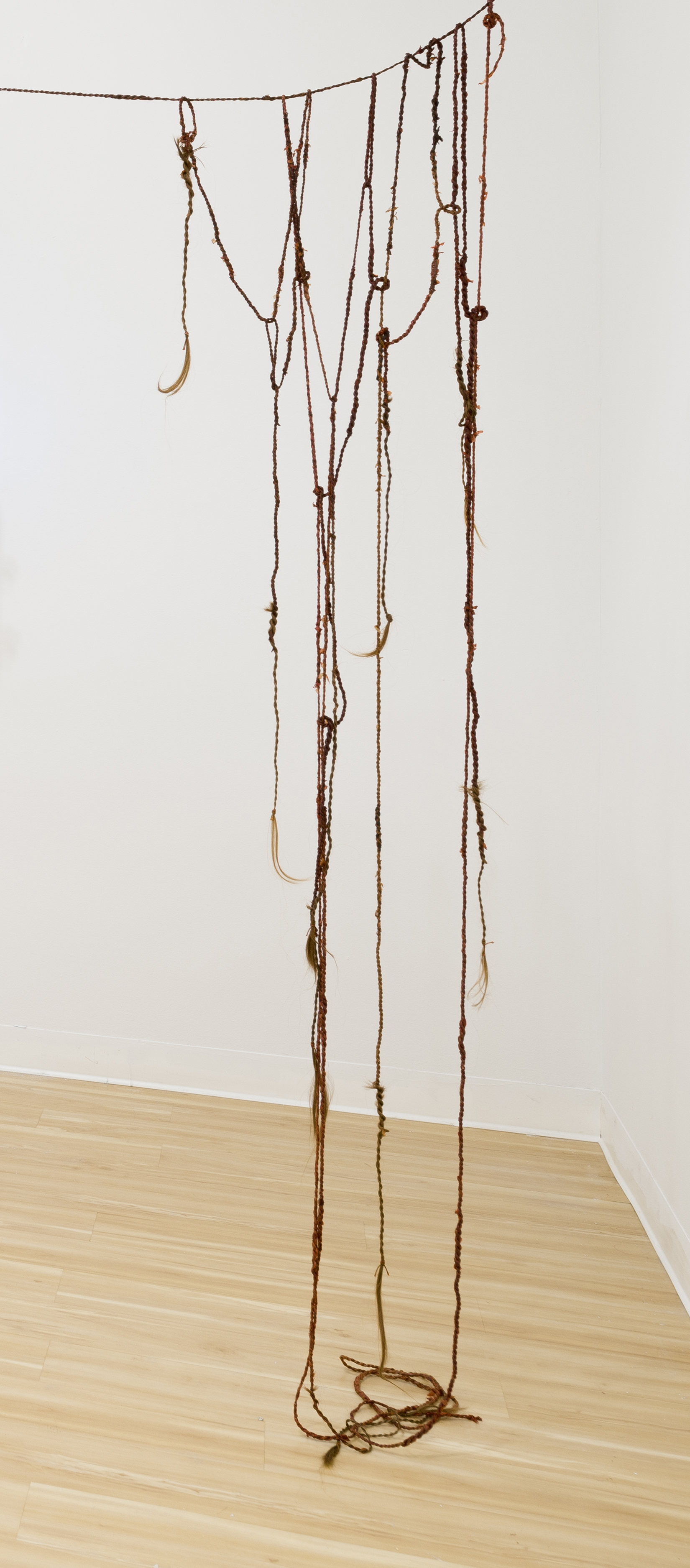
more soon...
